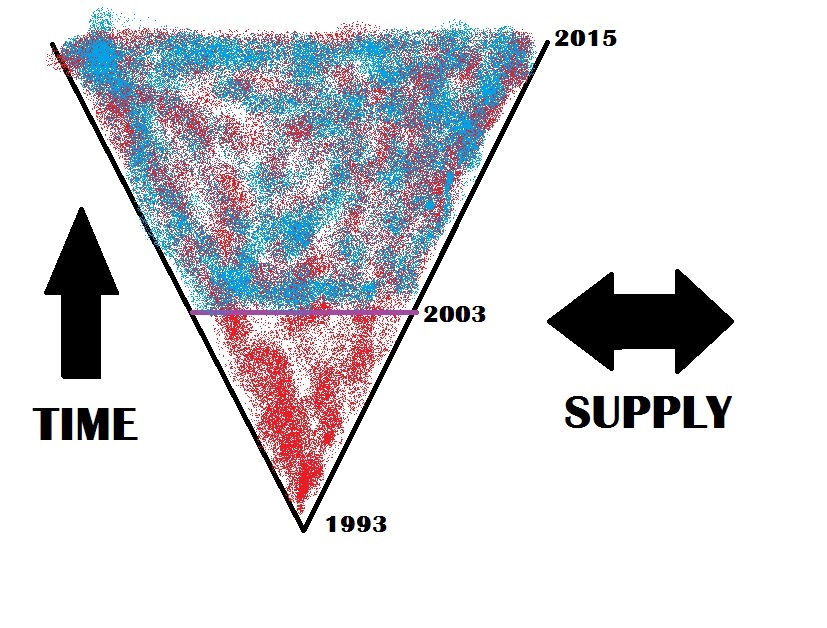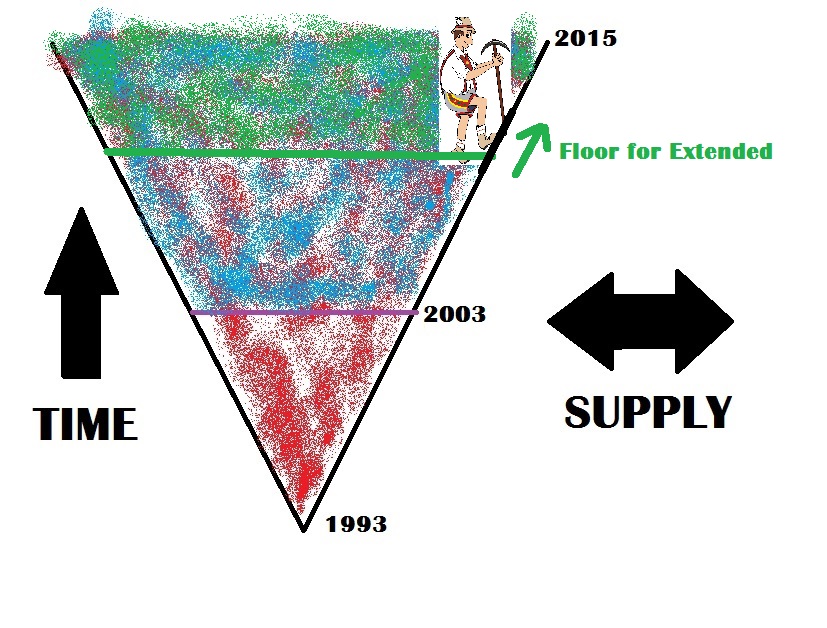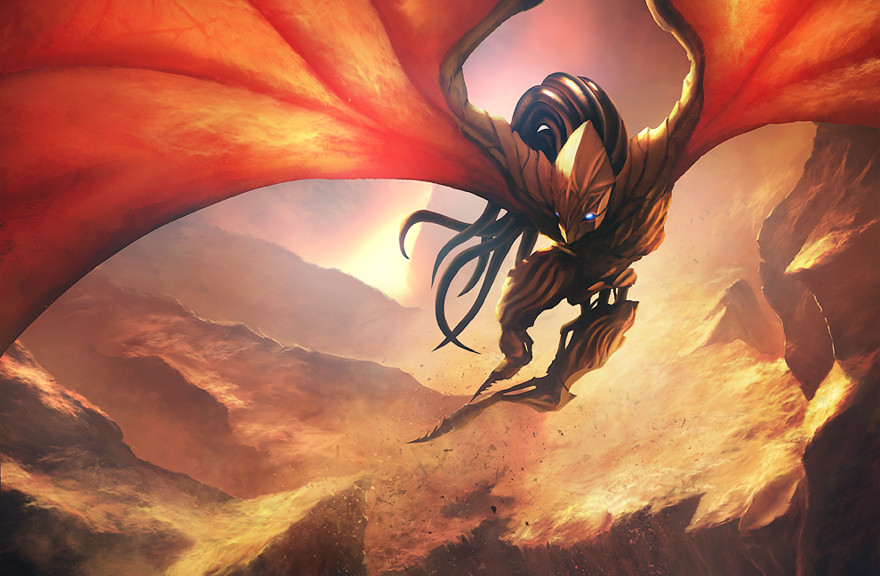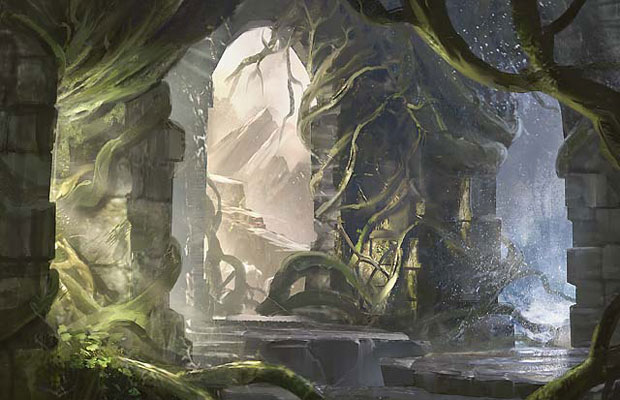Sometimes things just line up perfectly. If you read my article last week (of course you did, you never skip an installment!), then you may have picked up on some anti-Modern sentiment (or, at least, pro-Extended). We are going to get into some of the nuts and bolts stuff further along, but the gist of the argument is this: Modern is not necessarily the miraculous catch-all that Wizards imagined when the format was created.
Even from a purely financial perspective, there are a lot of things to not like about it. We got a great example of why last weekend when Collected Slivers made a surprise top eight appearance in SCG’s Modern Open. You know what? Let’s just get started, and you’ll figure it out as we go (or just smile and nod every now and then, and maybe say something like, “Hmm, interesting,” or, “That’s one interpretation.” This approach will also get you through any art gallery showing or non-French wine tasting1).
Wizards and Fan Engagement
One of the reasons why Magic is such an enjoyable hobby is because the producers of the game are so actively involved with the consumers. While social media has now made direct fan engagement easier for any companies to do (even though so many of them are bad at it), Wizards has consistently valued fan reactions, responses, and requests.
Heck, the fact that we are getting foil full-art(ish) fetch lands and shock lands in Standard-legal boosters seems to suggest that Wizards has gotten pretty good at parsing through our feedback, even though I would have never in a million years expected the company to do something like this. Yet another way that Wizards engages the community has been by hiring professional Magic players (and some contest winners) into its ranks.
I say all of this to make the point that when Modern was announced as a format, it was to strong fan applause—the demand for it had begun months earlier, and all players were waiting for was WOTC’s blessing. Wizards knew what the fans wanted and gave it to them, but that doesn’t mean what the fans wanted was what was best for them.
Modern Background
Modern came largely out of the smoldering ashes of Extended, a format that had neither stability nor a large fan base. Extended was, for most of its life, “the last seven years,” meaning that it was much deeper than Standard, but still rotated annually. The last year or so of Extended events reduced the format to the last four years’ worth of sets, which gave the format notably less depth, and at a time when depth was needed the most.
Extended was also considered a “PTQ format” in the sense that people would only play it when they were “required to,” which was only during Extended PTQ season (January to April). In fact, the appeal of Extended was so low that most players would sell off their decks when the PTQ season ended, just because they knew the cards would be worthless for the next eight months. I personally liked seven-year Extended, and I even tried out (the current) four-year Extended back in January. I really liked it!
If Modern was just a response to the complaints about Extended, things would probably be a little better—but there is more. Modern was created in 2011, which coincided with the surge in popularity of Legacy. Legacy, prior to the Zendikar Boom2, wasn’t even a PTQ format like Extended. It was closer to how Vintage is regarded today, in that it got a few weekends a year where people outside of the format’s hotspots watched and said, “That’s kind of neat!” and then forgot about it a week later.
The crucial reason why Modern doesn’t rotate is because it took the role of spiritual successor to Legacy, removing the prohibitive barrier of card scarcity (hahahahahahahahaha) but keeping cards in the format indefinitely (besides stuff like banning, which is fair). Unlike Extended in any of its forms, if you love Affinity or Tron, you can play it in Modern ostensibly forever, even though Urza’s Tower hasn’t been reprinted in (just) over a decade, and Magic‘s development team was literally too scared to bring Affinity back in Scars.
Modern Supply Issues
AUTHOR’S NOTE: The following point will be illustrated using MS Paint. I am not an artist. Okay, now pretend I’m saying the next part in a cool Neil DeGrasse-Tyson voice. *clears throat*.
If we look at the first highly scientific graph that I have provided, you will see the growth of Magic represented as a cone. As it moves forward in time (up), the supply expands to meet growing demand (width). Although in actuality Magic‘s past growth would not be a perfect cone (growth expanded more rapidly in some years than others), the nature of the game’s expansion can still be represented this way.
In Legacy, the floor of the format is the game’s literal starting point in 1993; in Modern, it’s the purple line representing 2003. The reason why many Legacy staples are so expensive is that as you get closer to the bottom of the cone, the supply is constricting, which forces the price to rise as compensation.
Modern, in attempting to be the “new Legacy,” is raising that bottom to a wider point in the cone, but it is still significantly narrower than the top (which is going to happen at any point, unless the player population takes a significant and sustained downturn to the point of throttling print-runs).
Rotating formats like Standard and Extended have a floor, but it moves as the graph grows. Something more like this:
One of the important factors that gets overlooked for Modern is that it doesn’t filter out outdated design philosophies. Part of the reason why I mentioned Affinity and Urzatron lands earlier are because neither currently fit development’s standards for Magic design. In any iteration of Extended, Urza’s Tower would be nothing more than an antiquity. In Modern, the cycle is a pillar of the environment. This is great if you are a dedicated Tron player, but boxes out room for other archetypes featuring newer cards because they can’t compete. This is a form of stagnation that prevents other decks from competing because they are primarily “worse” versions of cards deemed too good for current design philosophies3.
Modern Fears
The fear with Modern, unlike Legacy, is that any card can be reprinted at any time (assuming the reprint fits the development philosophy of the product its going in). This means that as cards drift closer to the floor of the format, and their price begins to rise, they can immediately get wiped out.
For example, the price on Smash to Smithereens got smashed (to smithereens!) when it was reprinted twice this calendar year, and it will take years for it to recover, if it ever does. More frequently, you will see cards that exist solely near the floor of the format that don’t fit current development standards spike because of their use in one narrow archetype. The most recent example is Sedge Sliver, a card that only exists because Magic was so briefly unpopular that design wanted to make a card that riffed on a rare from Alpha that most people don’t even remember4. It is highly unlikely that we see a Sedge Sliver reprint any time soon, which means that the new price ($10!) is likely going to take a while to go down, but how much actual demand now exists for the card?
While a static floor allows these “opportunities” to occur, they highlight a larger flaw with the format: in order for players to be competitive, they have to have access to cards at various points in the cone. As the cone continues to ascend and widen, that narrower bottom becomes more inaccessible, and can actively hurt demand for newer cards. If you tell newer players that they can play in a deeper, more enriched format with their existing cards, that is exciting—and probably helps drive interest in selling/trading older cards. But if their current cards can’t compete in the larger format, what then?
Let’s look at it this way: I would feel comfortable playing my current Abzan Aggro list in a field that includes some Standard lists from the past couple of years. At the very least, my losses would probably feel close enough that I would want to buy some new cards and try again. If I played Abzan Aggro in a format that includes things like Tron and Affinity, I’d be more likely to just ignore that format and keep playing Standard. This is the reason why it is so difficult to cultivate a Modern community if you don’t live in one already, and especially if you don’t have a majority of players with collections going back several years.
The Modern Point
The point of the article is this: I don’t feel comfortable being a “Modern” guy anymore, at least in terms of keeping staples in stock. The format is continuing to grow in the sense that it is popular online amongst the very vocal, very visible minority of Magic players, but it is an unstable place to park Magic capital long-term.
It’s also not very fun to play, largely for the reasons I spelled out above. I think a lot of players love the idea of the Modern format more than they love it in practice, and I think that there are some serious developmental issues that need to be addressed. The problem there is that because cards in the format don’t naturally expire, the only solution here is banning (which has an associated public relations cost that WOTC does not like).
It isn’t impossible to imagine a future format that serves as bridge between Standard and Modern (there is, after all, more time between now and Mirrodin than between Mirrodin and Alpha). While that format would be more prone to becoming “just” a PTQ Format the way old Extended did, it would also provide a real opportunity for cards with larger print runs to service the growing Magic population better than Modern does. If the format was successful as a year-long player, it would mean less of a hit in prices at rotation, and longer sustained prices. It would also be easier to bridge Standard players into the new format, since the older cards in the format would be more liquid and available.
I am not holding out hope for a radical format change, or trying to advocate that people should stop playing Modern if it is something they enjoy. I just want to articulate some of the very real issues with the format, and caution people who think that it is a safe place to “invest.” And again, it’s not fun.
That’s all for this week, although I really want to encourage you to leave your feedback this week. I think this is another one of those articles where a discussion is going to lead to more analysis than I could provide on my own, and it helps prevent me from being the only voice on this topic. I hope that you feel interested enough to leave your thoughts below, and I will check in over the course of the week.
…Except when the Jags are on. BECAUSE FOOTBALL IS BACK!!!!
Best,
Ross
1 See, only my premium readers get this quality life advice!
2 You’ve heard my spiel on this already, but thanks for clicking on the footnote! If you aren’t familiar with the Zendikar Boom, read my first article here on MTGPrice (linked above in the article).
3 It’s important to remember that this is why they originally banned Wild Nacatl.
4 I’ve always loved Sedge Troll. And the crazy thing is, Sedge Sliver wasn’t the only tribute to it in this block!





